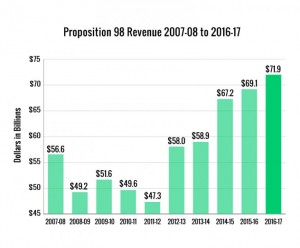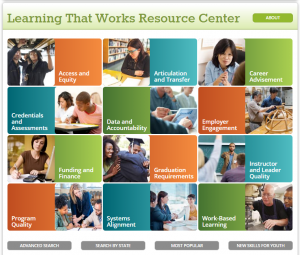 With students now on summer vacation, policymakers have been hard at work preparing for the upcoming school year – and Career Technical Education (CTE) has been front and center in several states. Last month, California approved a massive budget, including funds for the CTE Pathways Program and the new Strong Workforce Program. Meanwhile, some states are exploring strategies to address teacher shortages.
With students now on summer vacation, policymakers have been hard at work preparing for the upcoming school year – and Career Technical Education (CTE) has been front and center in several states. Last month, California approved a massive budget, including funds for the CTE Pathways Program and the new Strong Workforce Program. Meanwhile, some states are exploring strategies to address teacher shortages.
The Strong Workforce Program: California’s Investment in Community Colleges
Late last month, California Governor Jerry Brown approved the state’s budget for FY2016-17. Education – and CTE in particular – fared well. Continuing California’s past investments in CTE, the 2016-17 budget authorized $200 million for the Strong Workforce Program, an initiative to expand access to CTE courses and to implement a regional accountability structure.
The Strong Workforce Program was authorized through Assembly Bill 1602 and is based on recommendations from the Task Force on Workforce, Job Creation, and a Strong Economy. The program includes a noncompetitive grant that community colleges can receive by joining regional cross-sector partnerships with education and workforce leaders. The grant, which is awarded based on unemployment rates and CTE enrollment in the community, is designed to:
- Ensure that CTE and workforce development programs in community colleges are responsive to employer and worker needs;
- Encourage cross-sector collaboration; and
- Engage employer and labor leaders in developing and aligning programs to workforce needs.
The budget includes other notable investments in CTE. The CTE Pathways Program, which supports local linkages between education and workforce development from middle school through community college, received a one-time increase of $48 million. The new budget also saw a 2.6 percent adjustment to the Local Control Funding Formula base grant to support the cost of operating high school CTE programs (check out a primer on the Local Control Funding Formula here).
What the California Budget Means for Teachers
The budget also includes measures to support teacher recruitment and certification, such as:
- A $10 million grant program for postsecondary institutions to develop integrated teacher preparation programs;
- $20 million to establish the California Classified School Employees Credentialing program; and
- $5 million to establish the California Center on Teaching Careers, which would actively recruit teachers into the classroom.
Speaking of Teacher Recruitment…
Other states are exploring innovative strategies to draw more industry professionals into the classroom. In New York, the Board of Regents issued an updated rule that provides three additional pathways for individuals with industry experience to obtain a teaching certificate. Similarly, Utah adopted a new rule allowing districts to hire industry professionals without teaching experience. Under this rule, applicants must have a bachelor’s degree or higher, pass a Board-approved content knowledge assessment, and be assigned a master teacher mentor to qualify for a teaching license.
Back to California
Separately, the California State Board of Education last week approved an early version of its College and Career Readiness Indicator, which is designed to measure how prepared students are for life after high school. If the measure is approved, students would qualify as “Well Prepared” if they complete a CTE pathway with a “C” or better; score “Ready” on the 11th-grade math and English Smarter Balanced Assessment; earn a three or higher on at least three AP exams; complete three or more years of dual/concurrent enrollment in community college courses; or earn an International Baccalaureate diploma. While the Board plans to continue discussion, this early draft previews California’s vision for the Indicator.
Odds and Ends from Other States
In an effort to create a more seamless K-16 education system, the Louisiana state legislature directed the superintendent of education to study and provide recommendations on increasing participation in dual enrollment programs and aligning secondary and postsecondary systems to encourage postsecondary credit attainment in high school. The superintendent is required to report back to the legislature in early 2017, so we will keep an eye out for the final recommendations and report back.
And in South Carolina, Act 252 established the Coordinating Council of Workforce Development, a cross-sector council charged with assessing workforce needs in the Palmetto State and providing recommendations to increase access to workforce training programs. Governor Nikki Haley said the legislation would bring together businesses and technical colleges to help students gain necessary skills to fill the 60,000 job openings in the state.
Austin Estes, Policy Associate




